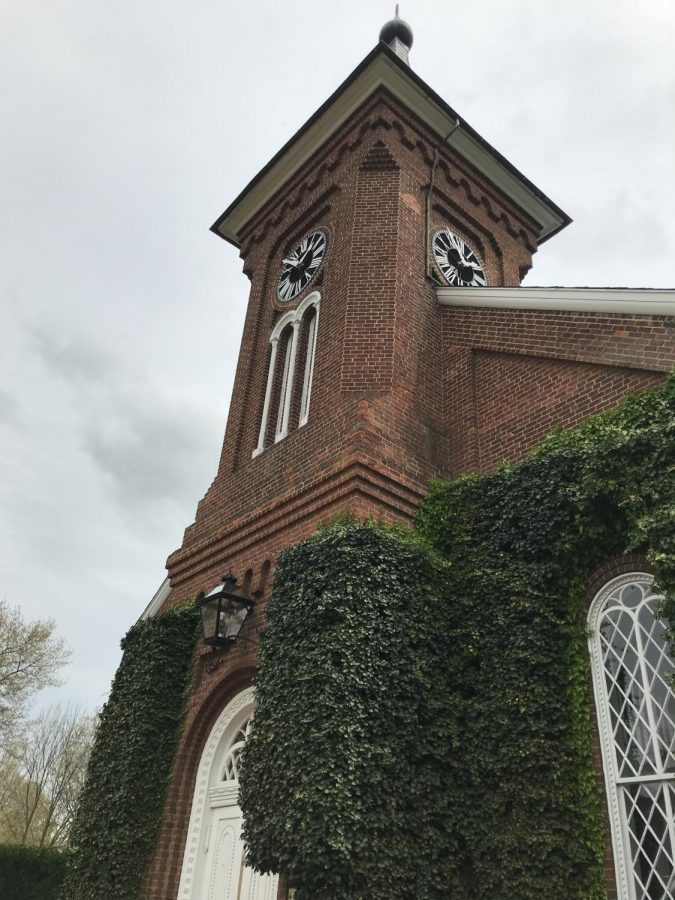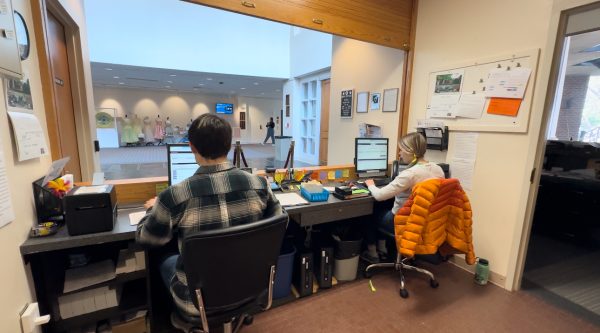Lee Chapel Museum serves as an educational resource during campus change
Museum examines George Washington, Robert E. Lee and institutional history. It aims to be visited more by the community
November 6, 2018
Due to recommendations from the Commission on Institutional History and Community, portraits of George Washington and Robert E. Lee have been replaced at Lee Chapel, thrusting the chapel to the forefront of campus discussion.
The commission recommended a number of changes involving Lee Chapel, including the replacement of the portrait of Lee in battle uniform with one of him in civilian clothing, as well as the closure of the doors separating the chapel and the statue chamber during university events. The administration chose to also replace the portrait of Washington.
Most students at Washington and Lee develop a degree of removed familiarity with Lee Chapel. Honor orientation takes place there, as well as the president’s opening address. After orientation week, how- ever, students’ visits become less frequent.
Most students are only vaguely aware of the chapel’s function as a museum, and few take the time to view the exhibitions. However, ac- cording to Lucy Wilkins, Director of University Collections and Lee Chapel and Museum, over 35,000 visitors stream through the chapel and museum each year, a number more than five times the population of Lexington itself.
The museum tells the story of the contributions of Lee and Washington to the early university, not of their might on the battlefield. Wilkins does acknowledge that it wasn’t always that way.
“It truly was the shrine of the South in the thirties and forties,” said Wilkins, “but that was not Lee’s intention for the building. Misconceptions come because the history has not been told very well.”
If students want to see the museum for themselves, tours are un- scheduled and self-guided, so visitors just have to walk inside. A guide can also meet visitors on the stage and speak briefly about the statue chamber.
The gates to the statue chamber have been locked since the violence involving alt-right, white supremacists in Charlottesville, Virginia, last year. But, Lee Chapel Museum leadership is working on a plan to make the chamber accessible to the general public.
The museum itself houses many valuable artifacts, such as paintings, the statue and personal belongings of Lee.
“Our department is responsible for the art collection of the university, so we were anxious to provide more protection for the artifacts,” said Wilkins.
Visitors are then guided downstairs to the Lee family crypt, where Lee, his wife and various family members are buried. To the right of the crypt are Lee’s office and the museum space, which take up most of the bottom floor.
Lee’s office is preserved exactly as it would have been the day of his death and the museum features other items from the early days of Washington and Lee.
Wilkins, who has been with the Museum since 2013, wants more members of the Washington and Lee community to utilize and learn from the space.
With updated exhibits, new technology and a central location, Wilkins sees the museum becoming the true heart of campus, as it was in the past.
“What I’d really like to see is the students use the building more,” said Wilkins, “We’d like to see different groups of students come and really make it their chapel.”













